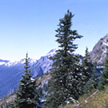| Report Documents
|
|
|
| |
| Map Plotfiles
|
-
No files of this type available
|
| |
| Data Files
|
-
No files of this type available
|
| |
| Digital Map Files
|
-
No files of this type available
|
| |
| Image Document
|
-
No files of this type available
|
| |
| Video Files
|
-
No files of this type available
|
| |
|
All Documents
|
|
|
| Contact
|
|
-
If you have any questions on the information presented, or require additional report data or attachments, please contact the Report Contact
|
|
|
This report assesses water quality data and long-term water quality trends in the Salmon River at Salmon Arm, in accordance to the Canada- British Columbia Water Quality Monitoring Agreement.
|
Author: Swain, L.G.
|
|
|
Date Published: Mar 2007
|
Report ID: 11291
|
Audience: Government and Public
|
This report provides water quality data analyses for Salmon River at Salmon Arm. The Salmon River at Salmon Arm is located in the southern-interior portion of the province. Its headwaters originate about 15 km northeast from Salmon Lake. Some of the river's flow is diverted into Salmon Lake; much of that flow returns to the river via McInnis Creek, the outlet from Salmon Lake. From the confluence with McInnis Creek, the Salmon River flows northeast to Falkland, then southeast and east to Glenemma, and finally north to Salmon Arm before entering Shuswap Lake. The total length and drainage area of the Salmon River are approximately 120 km and 1510 km2, respectively.
The Salmon River is an important tributary of Shuswap Lake, which drains into the South Thompson River. In addition to supporting anadromous salmonids, resident fish species
and other aquatic organisms, the Salmon River and its tributaries provide important sources of raw water for domestic water supplies, irrigation, and livestock watering. Recreation and aesthetics also represent important uses of the aquatic environment, both of which generate social and economic benefits to area residents. Concerns related to environmental quality conditions in the Salmon River are primarily associated with non-point source contaminant discharges. Such contaminants arise from a variety of land use activities, including forest management, agriculture and urban development. Contaminants of concern in the watershed include suspended solids, turbidity, ammonia, phosphorus, nitrogen, metals and fecal coliforms. In addition, water withdrawals from the river and nearby infiltration galleries have resulted in decreased stream flows and associated effects on water temperatures and other habitat features in the river. EMS site # E000000. Report also found at the following website: http://www.env.gov.bc.ca/
|
Report Type
Subject
| |
Region - Thompson-Nicola |
| |
Watershed Groups - 128 - South Thompson |
| |
Water Information - Water Quality |
| |
|
|
